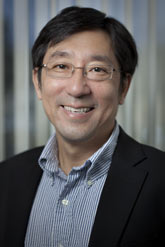
Handy Links
SLAC News Center
SLAC Today
- Subscribe
- Archives: Feb 2006-May 20, 2011
- Archives: May 23, 2011 and later
- Submit Feedback or Story Ideas
- About SLAC Today
SLAC News
Lab News
- Interactions
- Lightsources.org
- ILC NewsLine
- Int'l Science Grid This Week
- Fermilab Today
- Berkeley Lab News
- @brookhaven TODAY
- DOE Pulse
- CERN Courier
- DESY inForm
- US / LHC
SLAC Links
- Emergency
- Safety
- Policy Repository
- Site Entry Form

- Site Maps
- M & O Review
- Computing Status & Calendar
- SLAC Colloquium
- SLACspeak
- SLACspace
- SLAC Logo
- Café Menu
- Flea Market
- Web E-mail
- Marguerite Shuttle
- Discount Commuter Passes
-
Award Reporting Form
- SPIRES
- SciDoc
- Activity Groups
- Library
Stanford
Around the Bay
From the Director of SSRL: Ready for the Next User Run

At the end of July, Piero Pianetta wrote in SLAC Today a column describing the successes of the 2010 user run at the Stanford Synchrotron Radiation Lightsource. The joint Linac Coherent Light Source and SSRL Users' Conference that just concluded confirmed the high level of satisfaction—and expectations—of the user communities. With the SPEAR3 storage ring exceeding its original design specifications, SSRL is extremely competitive among the best synchrotron sources in the world, and we at SSRL are now poised to explore its full potential. First, on the operation side, we are taking another step toward the goal of 500 mA beam current with frequent fill injection, and we will be starting the 2011 run in November at 350 mA, compared to 200 mA last year. As we gain experience at 350 mA, we will increase the current during test runs to ensure that the resulting data quality remains high before putting even higher current modes into user operations. We put a high priority on making sure that users will operate effectively at the higher currents.
Second, users will benefit from an additional station and new instruments in 2011. We will be commissioning one more station to bring the facility to a total of 27 experimental stations (nine bend, 18 insertion device). The new station is Beamline 14-3 and will cover the intermediate energy range from approximately two to five kilo-electron volts. This will allow us to cover the important k-edges from phosphorous to titanium. We have also emphasized improving the in-hutch instrumentation including a state-of-the-art, 100-element germanium detector for Beamline11-2, replacing the diffractometer on Beamline 7-2 with one that has better capabilities. In addition, the Recovery-Act-funded advanced spectroscopy instrument that will be commissioned this year will address a wide range of scientific problems. Other developments are planned to increase micro-focus imaging capabilities and, through a Laboratory Directed Research and Development project in collaboration with PULSE, we are exploring the use of SPEAR for picosecond pump-probe research. This provides important, complementary information to the femtosecond pump-probe research at LCLS.
Third, on the biological side, the SSRL structural molecular biology program, or SMB, continues to provide state-of-the-art capabilities in macromolecular crystallography, biological small-angle scattering and X-ray absorption spectroscopy. This will continue into the future with renewal in funding for four SMB programs, including the core SMB program supported by the Department of Energy Basic Energy Sciences program, the National Institutes of Health National Center for Research Resources and National Institute of General Medical Sciences, the Macromolecular Crystallography Enhanced User Access program, NIH NCRR Recovery Act proposal for development of a drug discovery pipeline, and Joint Center for Structural Genomics–NIH-NIGMS high-throughput structural genomics center.
Looking into the future, we will leverage the growth in the Photon Science Directorate to expand the materials and chemical sciences programs, and develop scientific programs complementary to LCLS. In particular, we will organize the wide range of tools available at SSRL to tackle high-impact scientific problems and problems with high societal impact, and facilitate the integration of basic and applied research. We will enhance the partnership with SLAC and Stanford faculties and synchrotron experts in the user community to better connect the core competence of SSRL with the most important problems in the user community, to better guide the investment in SSRL and to accelerate the speed of discovery. Finally, we will begin to build the scientific case for the best use of PEP-X.
